So laden Sie eine 12-V-Lithiumbatterie auf – Schritt-für-Schritt-Anleitung
Das Laden einer 12-V-Batterie ist eine grundlegende Fähigkeit für jeden, der auf Fahrzeuge, Solaranlagen oder Notstromlösungen angewiesen ist. Ob Sie eine Autobatterie, eine Deep-Cycle-Batterie für Wohnmobile oder ein Solarenergiespeichersystem warten – das Wissen um die richtigen Ladetechniken kann die Leistung und Lebensdauer der Batterie verbessern. In dieser umfassenden Anleitung führen wir Sie durch die wichtigsten Schritte zum sicheren und effektiven Laden einer 12-V-Batterie.
- Ihre 12-V-Batterie verstehen
- Schritt-für-Schritt-Anleitung zum Laden einer 12-V-Batterie
- Tipps zur Wartung Ihrer 12-V-Batterie
- Fehlerbehebung bei häufigen Ladeproblemen
Ihre 12-V-Batterie verstehen
Bevor Sie mit dem Ladevorgang beginnen, ist es wichtig zu wissen, mit welchem 12-V-Batterietyp Sie arbeiten. Zu den gängigsten Typen gehören:
Blei-Säure-Batterien : Dies sind herkömmliche Batterien, die in den meisten Fahrzeugen verwendet werden. Sie erfordern regelmäßige Wartung, z. B. die Überprüfung des Elektrolytstands und die Gewährleistung einer ausreichenden Belüftung während des Ladevorgangs.
AGM-Batterien (Absorbent Glass Mat) : AGM-Batterien sind eine Art versiegelter Blei-Säure-Batterie. Sie sind wartungsfrei und weniger anfällig für Auslaufen. Sie werden häufig in Motorrädern und Hochleistungsfahrzeugen verwendet.
Gel-Batterien : Diese ähneln AGM-Batterien, verwenden jedoch einen Gelelektrolyt. Sie eignen sich ideal für Deep-Cycle-Anwendungen wie Solarstromanlagen.
Lithium-Ionen-Batterien : Lithium-Ionen-Batterien sind für ihre hohe Energiedichte und ihr leichtes Design bekannt und werden zunehmend in modernen Elektrofahrzeugen und tragbaren Kraftwerken eingesetzt.
Durch die Identifizierung Ihres Batterietyps können Sie die geeignete Lademethode und das passende Gerät bestimmen.
>>Siehe auch „Spannungsoptionen für Batterien der Gruppen 4D, 6D und 8D verstehen“
Schritt-für-Schritt-Anleitung zum Laden einer 12-V-Batterie
Schritt 1: Besorgen Sie sich die notwendige Ausrüstung
Um Ihre 12-V-Batterie sicher aufzuladen, benötigen Sie:
Kompatibles Batterieladegerät : Stellen Sie sicher, dass das Ladegerät zu Ihrem Batterietyp passt (z. B. Blei-Säure, AGM, Gel oder Lithium-Ionen).
Sicherheitsausrüstung : Tragen Sie Handschuhe und eine Schutzbrille, um sich vor versehentlichem Verschütten von Säure oder Funken zu schützen.
Multimeter : Zum Überprüfen der Batteriespannung vor und nach dem Laden.
Destilliertes Wasser (für Blei-Säure-Batterien): Zum Auffüllen des Elektrolytstands, falls erforderlich.
Sauberes Tuch : Zum Reinigen der Anschlüsse und Entfernen von Korrosion.
Schritt 2: Überprüfen Sie die Batterie
Vor dem Anschließen des Ladegeräts:
Auf Schäden prüfen : Suchen Sie nach Rissen, Lecks oder Ausbeulungen.
Anschlüsse reinigen : Verwenden Sie eine Mischung aus Backpulver und Wasser, um die Anschlüsse von Korrosion zu befreien.
Elektrolytstand prüfen : Stellen Sie bei gefluteten Blei-Säure-Batterien sicher, dass der Elektrolyt die Platten bedeckt. Fügen Sie bei Bedarf destilliertes Wasser hinzu.
Schritt 3: Schließen Sie das Ladegerät an
Ladegerät ausschalten : Starten Sie immer mit ausgeschaltetem Ladegerät, um Funkenbildung zu vermeiden
Klemmen anbringen :
Verbinden Sie die positive (rote) Klemme mit dem Pluspol (+) der Batterie.
Verbinden Sie die negative (schwarze) Klemme mit dem Minuspol (-) der Batterie oder einer geerdeten Metalloberfläche entfernt von der Batterie.
Schritt 4: Ladegeräteinstellungen festlegen
Spannung auswählen : Stellen Sie sicher, dass das Ladegerät auf 12 V eingestellt ist.
Lademodus auswählen :
Erhaltungsladung : Ideal, um über längere Zeiträume eine volle Ladung aufrechtzuerhalten.
Schnellladung : Geeignet zum schnellen Aufladen eines mäßig entladenen Akkus.
Desulfatierungsmodus : Für Blei-Säure-Batterien, die Anzeichen von Sulfatierung aufweisen.
Ladevorgang überwachen : Behalten Sie den Ladevorgang im Auge, insbesondere wenn Sie ein manuelles Ladegerät verwenden.
Schritt 5: Überwachen Sie den Ladevorgang
Spannung prüfen : Verwenden Sie ein Multimeter, um die Batteriespannung während des Ladevorgangs zu überwachen.
Achten Sie auf Überhitzung : Wenn die Batterie oder das Ladegerät übermäßig heiß wird, trennen Sie sie sofort.
Achten Sie auf Gasentwicklung : Ein blubberndes Geräusch kann auf eine Überladung hinweisen, insbesondere bei Blei-Säure-Batterien.
Schritt 6: Trennen Sie das Ladegerät
Sobald der Akku vollständig geladen ist:
Ladegerät ausschalten : Schalten Sie das Ladegerät immer aus, bevor Sie es trennen.
Klemmen entfernen :
Entfernen Sie zuerst die negative (schwarze) Klemme.
Entfernen Sie dann die positive (rote) Klemme.
Ladegerät richtig lagern : Bewahren Sie das Ladegerät an einem trockenen, kühlen Ort auf.
Schritt 7: Testen Sie die Batterie
Spannung prüfen : Eine vollständig geladene 12-V-Blei-Säure-Batterie sollte zwischen 12,6 V und 12,8 V anzeigen.
Belastungstest : Führen Sie, falls verfügbar, einen Belastungstest durch, um sicherzustellen, dass die Batterie unter Belastung eine Ladung halten kann.
>>Siehe auch: Wie hoch sollte der Ladestrom für eine 12-Volt-Batterie sein?
Tipps zur Wartung Ihrer 12-V-Batterie
Regelmäßiges Laden : Vermeiden Sie Tiefentladungen, indem Sie den Akku regelmäßig laden.
Verwenden Sie ein Batterieladegerät : Bei Fahrzeugen oder Geräten, die nicht täglich verwendet werden, kann ein Batterieladegerät die Batterie auf einem optimalen Ladezustand halten.
Richtige Lagerung : Lagern Sie Batterien an einem kühlen, trockenen Ort, um eine Alterung zu verhindern.
Überladung vermeiden : Überladung kann zu Überhitzung und Schäden führen, insbesondere bei Blei-Säure-Batterien.
Regelmäßige Inspektionen : Überprüfen Sie regelmäßig, ob Anzeichen von Verschleiß, Korrosion oder Leckagen vorliegen.
Fehlerbehebung bei häufigen Ladeproblemen
Problem : Akku wird nicht geladen.
Lösung : Überprüfen Sie die Ladegerätanschlüsse, stellen Sie sicher, dass das Ladegerät funktioniert, und untersuchen Sie die Batterie auf Schäden.
Problem : Der Akku überhitzt während des Ladevorgangs.
Lösung : Reduzieren Sie den Ladestrom, sorgen Sie für ausreichende Belüftung und prüfen Sie, ob eine Überladung vorliegt.
Problem : Die Batteriespannung fällt nach dem Laden schnell ab.
Lösung : Die Batterie ist möglicherweise defekt oder sulfatiert. Erwägen Sie eine Desulfatierung oder einen Austausch.

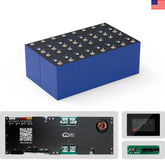



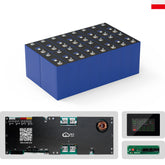

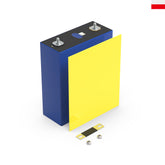

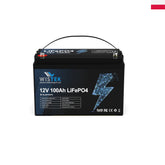
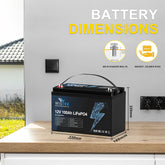


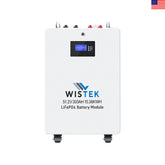
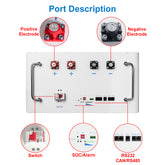
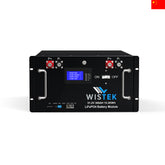
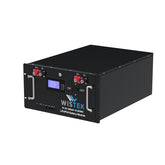


Leave a comment
All blog comments are checked prior to publishing